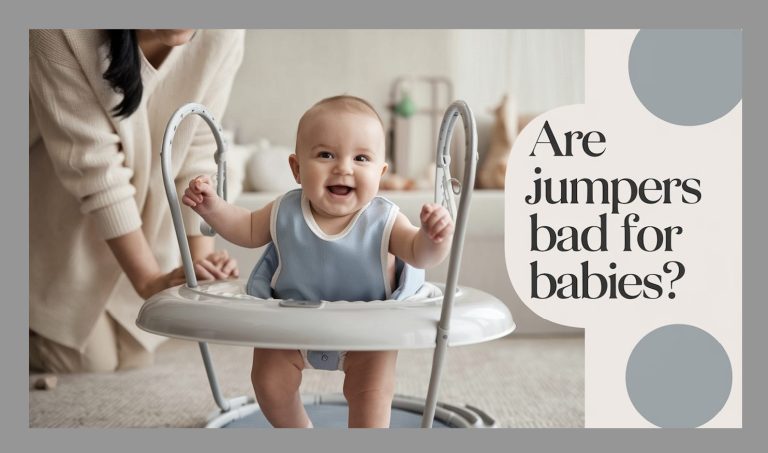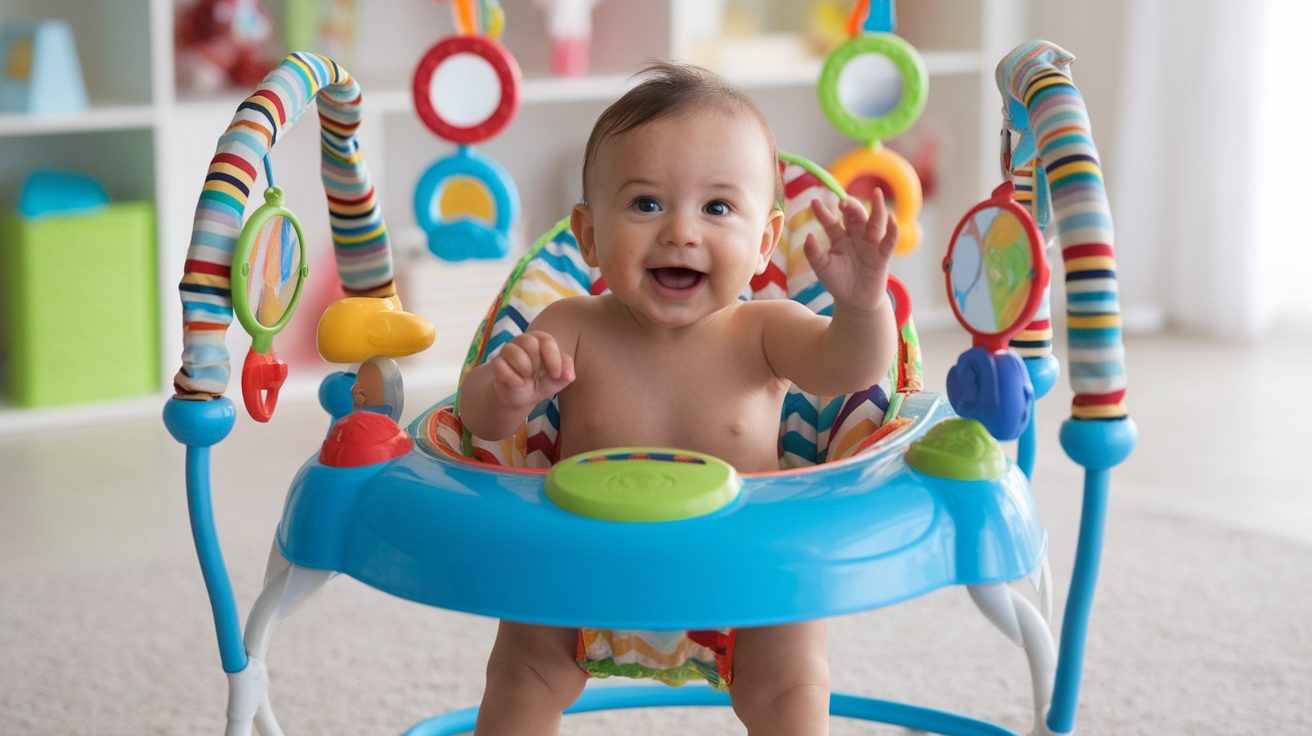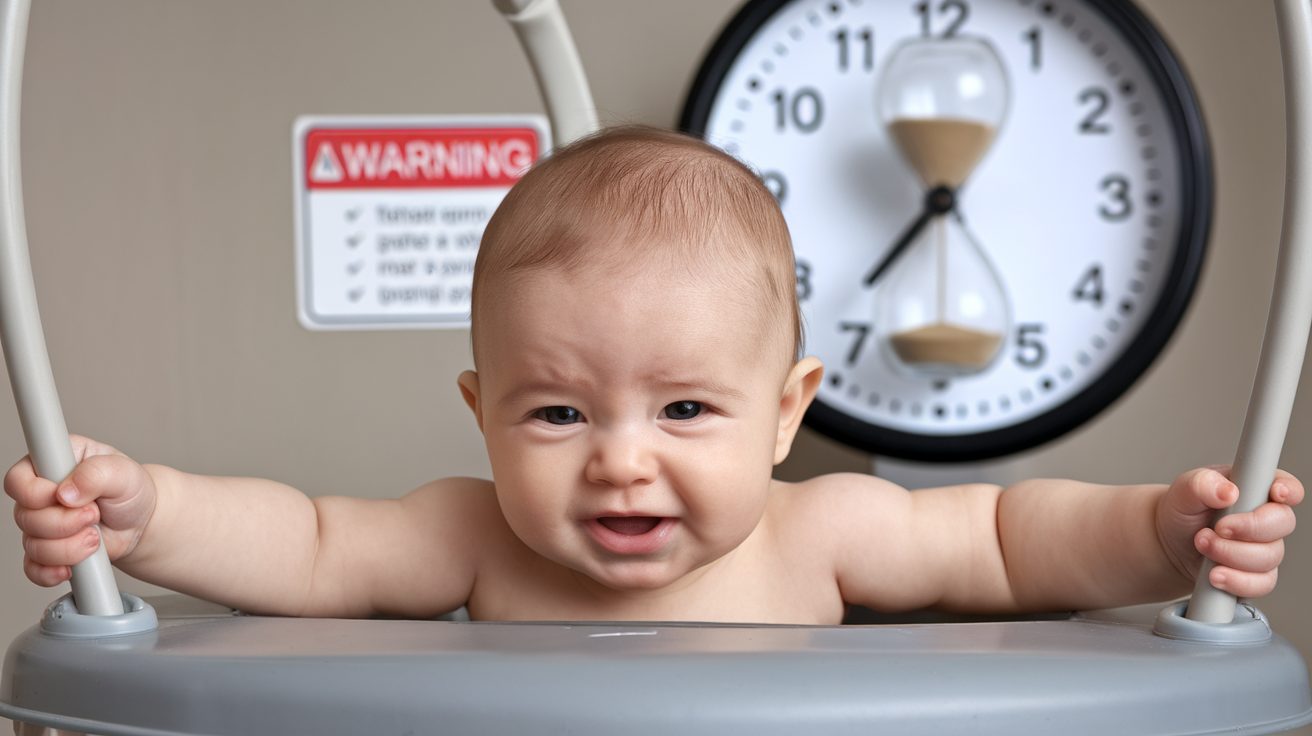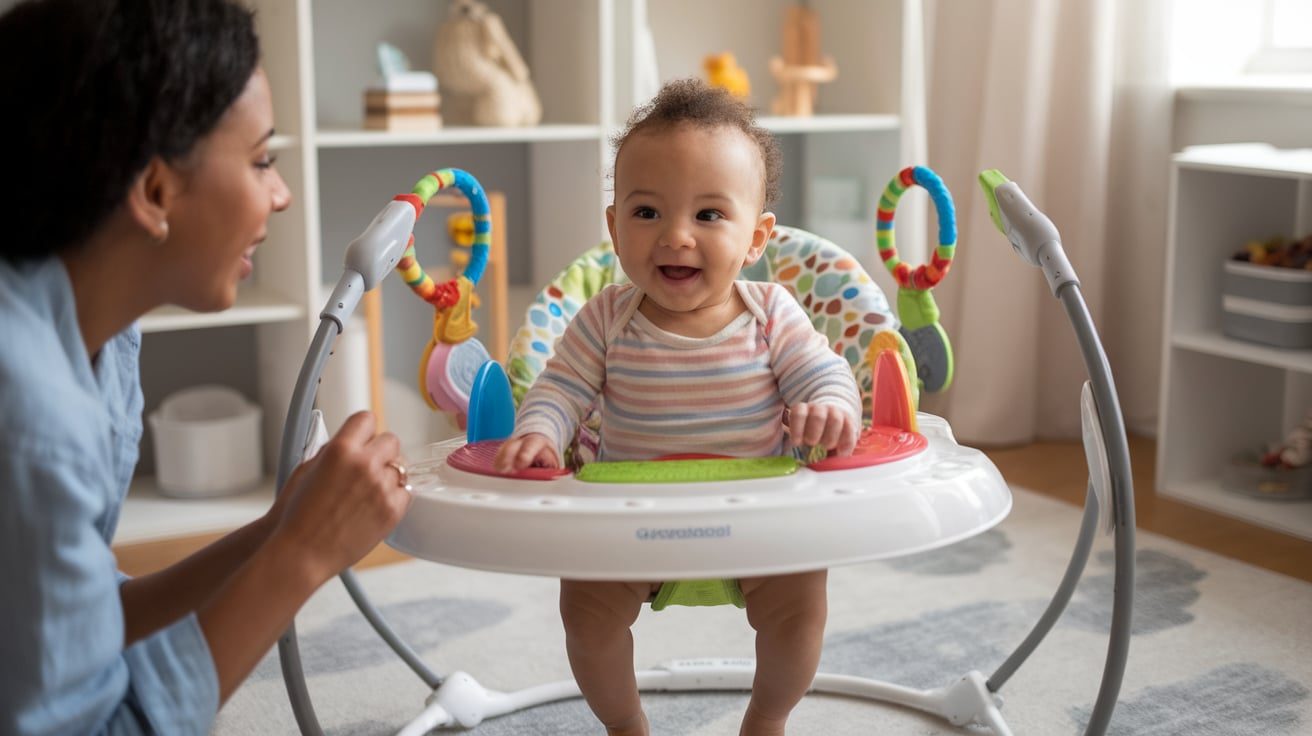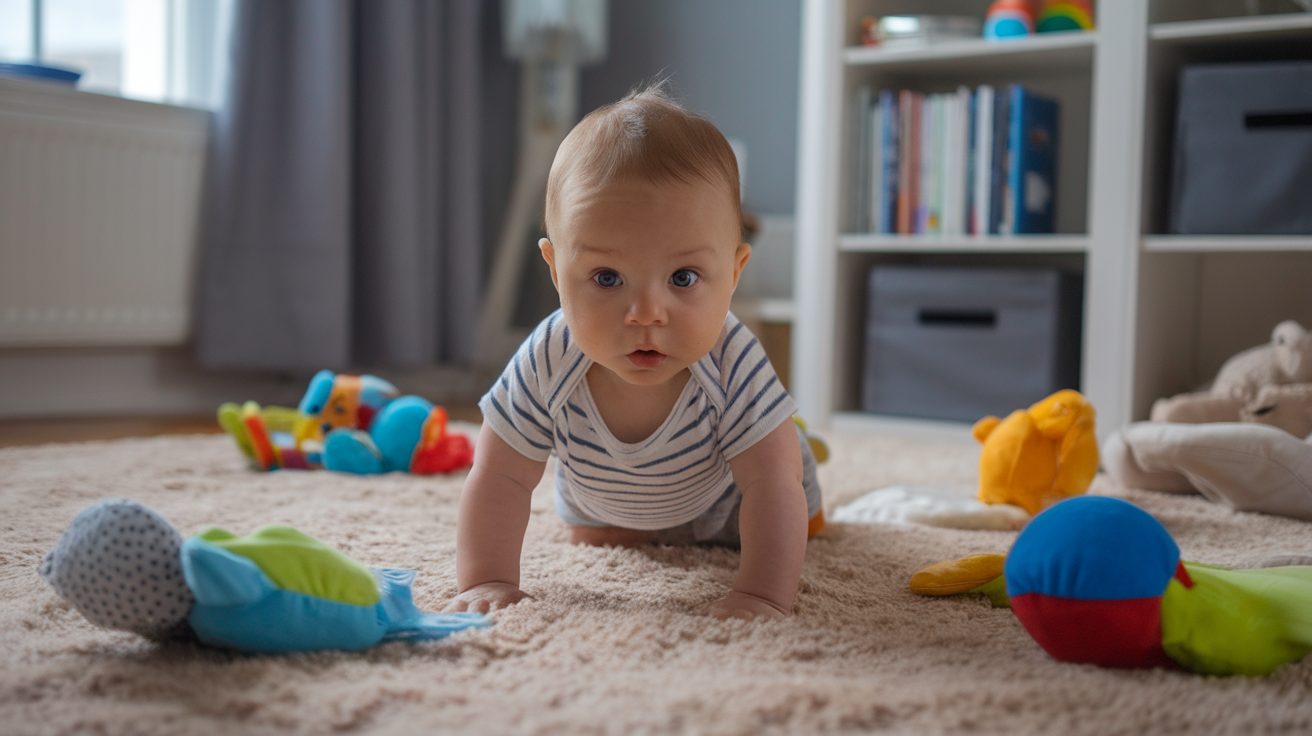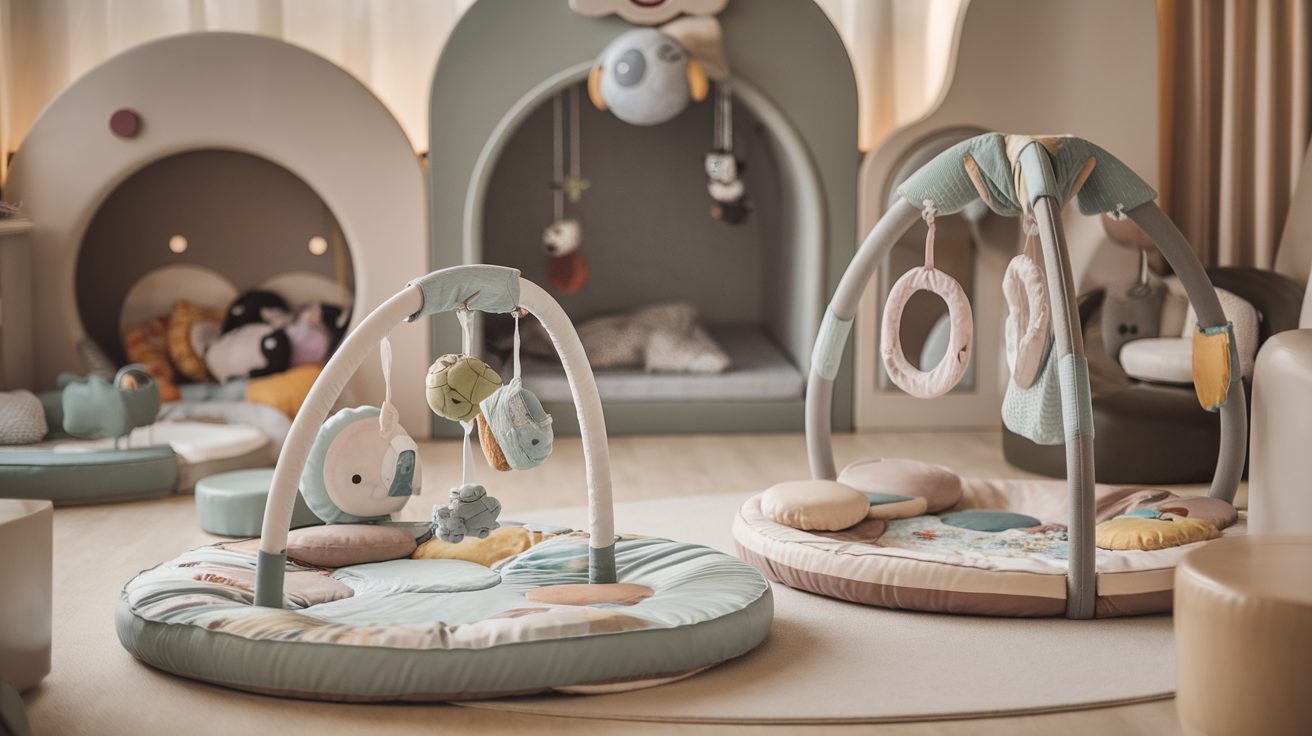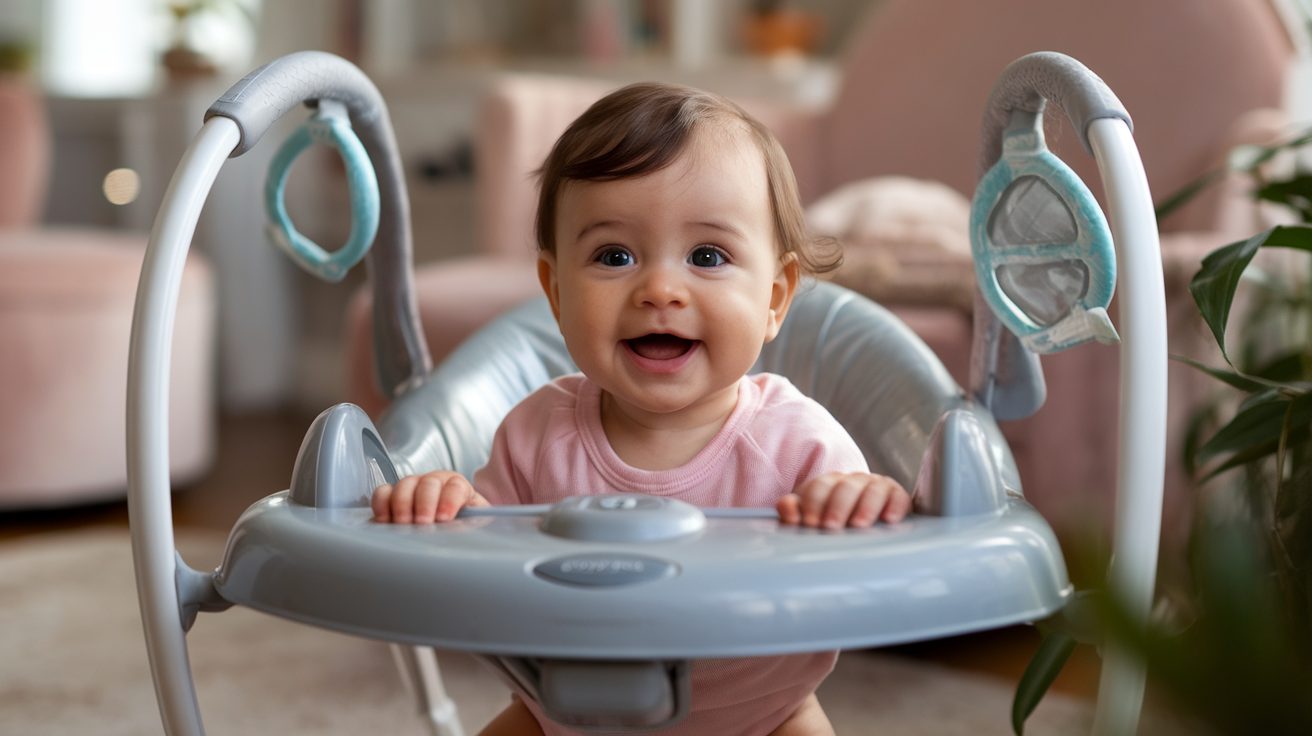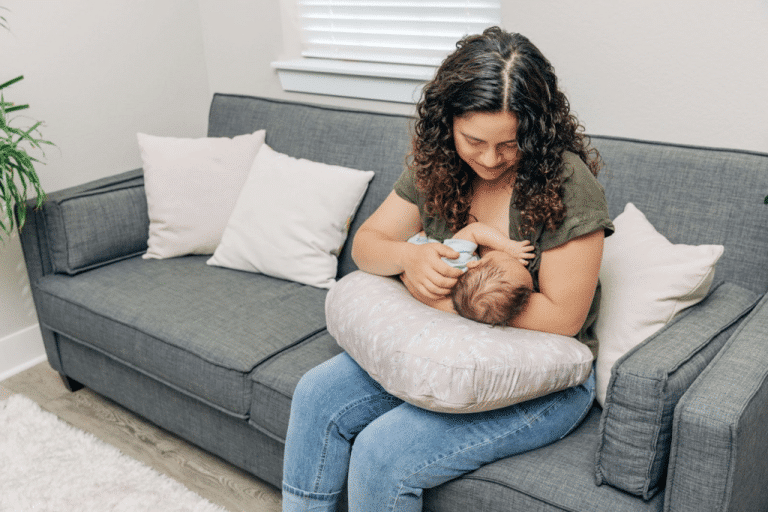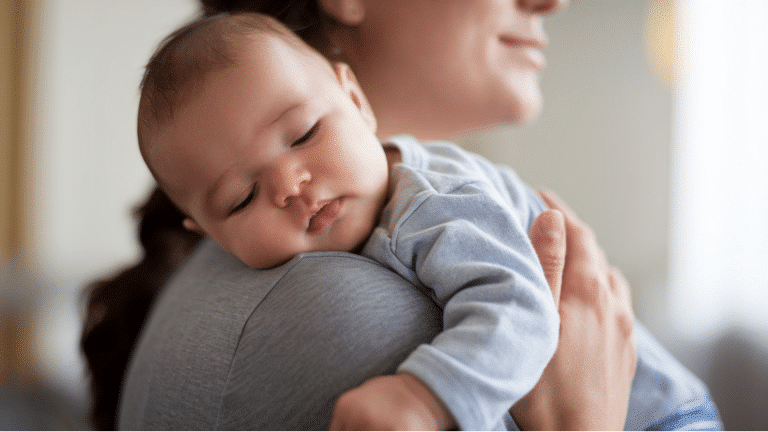Parents often wonder about the best ways to help their babies play and grow.
Many families use baby jumpers, thinking they’re a fun way to keep little ones active. But not all baby gear is safe or good for development.
This article will answer your question, “Are jumpers bad for babies?”. You’ll learn why these popular play items might not be as helpful as you think.
We’ll break down the facts about how jumpers can impact your baby’s physical growth and share safer alternatives for playtime and exercise.
By the end, you’ll know exactly how to make smart choices for your baby’s health and development.
What are Baby Jumpers?
Baby jumpers are special seats designed to help babies move and play while standing up. These devices give babies a fun way to bounce and explore movement in a safe, supported environment.
Types of Baby Jumpers
1. Stationary Jumpers
Standalone play stations feature a central seat on a circular or oval base with attached toys for entertainment, allowing babies to bounce and move around safely.
2. Doorway Jumpers
Doorway jumpers hang from a door frame using strong straps or a special frame, with babies seated comfortably in a spring-supported seat. They allow babies to bounce and swing in one spot while taking up less space than stationary models.
How Do Baby Jumpers Work?
Baby jumpers are designed to help little ones move and play. The seat wraps around the baby’s body and holds them up so they can bounce and have fun without falling over.
Special stretchy bands or springs make it easy for babies to bounce up and down with just a little push from their feet.
When babies push against the ground, the jumper helps them bounce back up, almost like they’re on a trampoline!
Toys attached to the jumper keep babies entertained while they exercise.
This bouncing motion is really exciting for babies and makes them feel like they’re flying.
Potential Risks of Baby Jumpers
1. Physical Development Concerns
- Hip and Spine Problems: Some experts are concerned that jumpers can affect a baby’s body by placing their hips in unnatural positions, restricting natural leg and hip movements, and potentially impacting bone and muscle growth.
- Spine Alignment Issues: Continuous use of jumpers can impact a baby’s spine development, hinder proper standing and walking skills, restrict natural body movements, and prevent muscles from developing healthily.
2. Motor Skill Development Risks
- Delayed Movement Learning: Overusing jumpers can delay movement learning by reducing time for floor activities. This can make it harder for them to build their muscles and learn to crawl and walk on their own.
- Muscle Weakness: Baby jumpers can weaken muscles by limiting natural movement and tummy time, which are important for developing core strength and balanced leg muscles.
3. Overuse Dangers
Doctors advise limiting baby jumper use to short sessions, as prolonged time in them can hinder growth.
Babies need varied movement for proper development, and extended use may affect physical and cognitive growth. Keep playtime brief to ensure health and activity.
4. Potential Safety Concerns
Baby jumpers can be risky if parents aren’t watching closely. Babies might try to move outside the safe area, which can lead to accidents. These devices can put stress on young muscles and bones.
They also limit a baby’s chance to explore and interact with their surroundings. Careful supervision and short play times are key to keeping babies safe while using these devices.
When to Use Baby Jumpers Safely?
1. Age and Development Guidelines
Baby jumpers work best for babies between 4 and 12 months old. Your baby should have strong neck muscles and be able to hold their head up without help.
Make sure your baby is not too heavy or too big for the jumper. Check that they can sit up without support and seem comfortable and stable in the device
2. Safety Positioning Tips
Comfort and safety are key when setting up a baby jumper. The seat should fit your baby snugly, with feet touching the ground.
Check that the straps hold your baby securely without being too tight. Place your baby right in the middle of the device to keep them balanced and protected.
3. Time Limits and Usage
Let your baby play in the jumper for only 15-20 minutes each time.
Do not use the jumper more than two or three times daily.
Alternatives to Baby Jumpers
1. Safe Movement Exercises
- Tummy Time: Tummy time helps babies build strong neck and shoulder muscles, encourages them to lift their head and chest, and supports essential motor skill development.
- Crawling Activities: Crawling activities promote full-body muscle growth, improve balance and coordination, and strengthen arms, legs, and core muscles.
2. Alternative Activity Centers
- Floor Play Stations: Floor play stations offer a safe space for babies to explore, with toys and interactive elements that encourage natural movement and learning.
- Activity Gyms: Activity gyms provide a soft mat with hanging toys that encourage reaching and stretching, helping to support muscle development.
Benefits of Baby Jumpers
Despite the concerns about baby jumpers, they do offer some positive aspects for parents. Here are a few benefits to consider:
- Physical Activity: Baby jumpers let babies move and bounce, which can help them burn energy in a controlled space.
- Short Break for Parents: These devices provide a safe spot to place babies while parents quickly complete household tasks.
- Sensory Stimulation: Many jumpers come with attached toys that can help develop hand-eye coordination and provide interesting visual and tactile experiences.
Important Note: While these benefits exist, they should not overshadow the potential risks to a baby’s physical development and safety.
Conclusion
Jumpers can be a fun and exciting way for your little one to bounce around and explore their movements.
While they’re great for short bursts of entertainment, it’s important to use them wisely.
Don’t forget to balance jumper time with plenty of floor play—it’s perfect for building those motor skills!
Every baby develops differently, so balance is key. These devices should be enjoyable but not the only way babies explore and strengthen their muscles.
So if your question, “Are jumpers bad for babies?” is answered through this blog, then it is a win-win situation.
Frequently Asked Questions
Is it Bad for a Baby to be in a Jumper?
Baby jumpers can be bad if used excessively or incorrectly. They can hinder proper physical development and pose safety risks.
Why Aren’t Baby Jumpers Recommended?
Baby jumpers aren’t recommended because they limit natural movement and exploration. They can cause poor posture and delayed motor skills. Babies can get injured if the jumper malfunctions or tips over.
Do Paediatricians Recommend Bouncers?
Pediatricians generally don’t recommend bouncers. They suggest supervised tummy time and floor play instead. Bouncers can be used in moderation but with caution.
Are Baby Jumpers Bad for Hips?
Yes, baby jumpers can be bad for hip development. They can put unnecessary stress on the hip joints. This may lead to hip dysplasia or dislocation in some cases. It’s best to limit time spent in jumpers and prioritize floor play.

